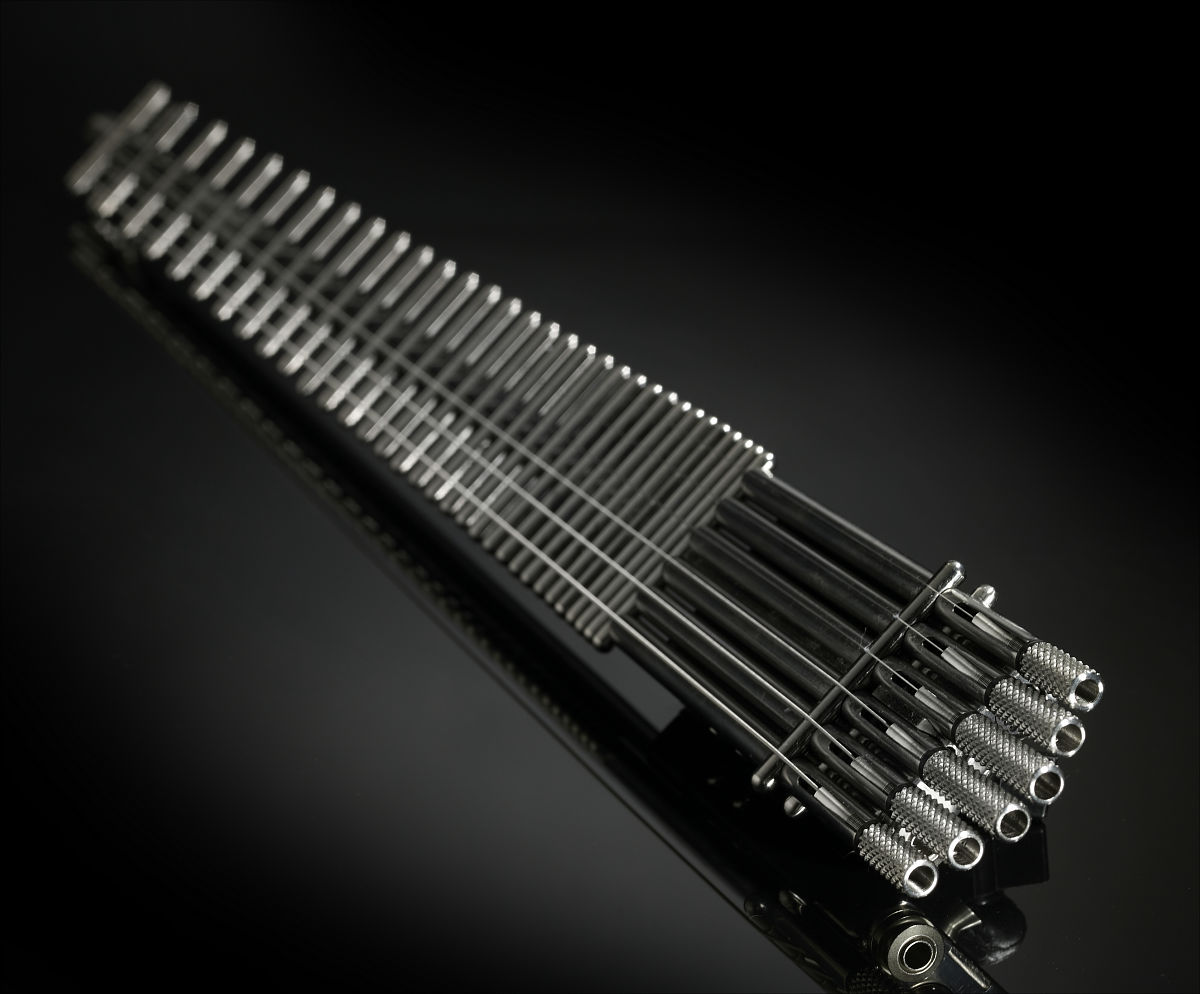Gittler guitar
Electronic Instruments
America
Between 1901 and present
Video
The Gittler guitar stands as a testament to avant-garde design in the realm of musical instruments. Eschewing traditional aesthetics, it presents a minimalist, skeletal structure that challenges conventional perceptions of what a guitar should be. Crafted primarily from metal, its design eliminates the customary wooden body and headstock, resulting in an instrument that resembles a metallic spine adorned with strings. This radical departure from tradition not only offers a unique visual appeal but also provides a distinct tactile experience for the musician.
Historical Context
The Gittler guitar emerged in North America during the mid-20th century, specifically in the 1970s. Allan Gittler, an innovative designer born in 1928, introduced the Gittler guitar in the late 1970s. His vision was to strip the electric guitar down to its most essential elements, removing any superfluous components that he believed were merely sentimental nods to acoustic predecessors. By doing so, Gittler aimed to create an instrument that was both functionally efficient and aesthetically unique. Between 1975 and 1985, he handcrafted 60 of these instruments in New York. In 1982, Gittler relocated to Israel, adopting the Hebrew name Avraham Bar Rashi, and continued his work there. His creations garnered attention from notable musicians, including Andy Summers of The Police, who famously played a Gittler guitar in the “Synchronicity II” music video.
Construction and Design
The Gittler guitar is constructed entirely from metal, with early models utilizing aircraft-grade aluminum and stainless steel. This choice of materials contributes to its futuristic appearance and durability. The instrument features 31 frets, offering an extended range of four octaves. Each string is equipped with its own pickup, allowing for individual amplification and tonal control. The absence of a traditional body and headstock reduces the guitar’s weight and eliminates unnecessary components, resulting in a more compact and lightweight instrument.
Variations and Features
Over time, the Gittler guitar has seen several iterations. The modern Gittler 2.0, for instance, is crafted entirely from aircraft-grade titanium, reducing its weight to approximately 1.4 kilograms—almost half that of the original. This model retains the minimalist design but incorporates advanced features such as compatibility with 13-pin MIDI systems, making it invaluable for synth players and film composers. Controls for volume, bass, and treble boost/cut, internal midrange, and individual string gain, as well as switchable low-pass filters for better MIDI tracking, enhance its versatility.
Types of Gittler Guitars
Type I: The original models made in New York, characterized by their bare-bones construction.
Type II: Prototypes featuring a black metallic mini body with steel tubes for strap attachment.
Type III: Later versions that included an epoxy body and variations in neck construction.
Sound Production and Playing Methods
The Gittler guitar’s unique construction results in a distinctive sound profile. The metal frets and lack of a resonant wooden body produce a tone that is both crisp and clear, with a pronounced attack. Musicians can exploit the instrument’s extended range and individual string outputs to create complex, layered sounds. The minimalist design encourages players to explore new playing techniques, as the absence of a traditional body allows for greater access to the frets and strings.
It produces sound through individual pickups for each string, allowing for precise and clean signal output without interference from a traditional wooden body. Made entirely of stainless steel, the Gittler guitar eliminates conventional components like a neck and headstock, relying on a skeletal frame with six strings suspended over cylindrical frets. Players can use traditional plucking and strumming techniques, but its design also encourages alternative playing methods, such as advanced tapping, sliding, and microtonal playing. The absence of a fixed fretboard allows for greater tonal flexibility, making it popular among experimental and avant-garde musicians. The Gittler guitar stands as a radical innovation in guitar design, redefining sound production through its futuristic approach.
Role in Music and Significance
The Gittler guitar is a revolutionary instrument that challenges traditional guitar design by eliminating a wooden body and focusing solely on the functional elements needed to produce sound. Designed by Allan Gittler in the 1970s, this minimalist guitar consists of a stainless-steel frame with exposed frets and no conventional neck, reducing weight and enhancing sustain. Its role in music lies in its ability to provide precision, clarity, and a unique tonal quality, making it popular among experimental and avant-garde musicians.
The Gittler guitar also features built-in electronic pickups, allowing seamless integration with amplifiers and effects processors, further expanding its sonic possibilities. Its significance extends beyond music into instrument design and innovation, influencing modern guitar craftsmanship by demonstrating that traditional forms can be reimagined without sacrificing playability or expression.n guitar design, influencing a generation of luthiers and musicians interested in experimental sounds and forms.
The Gittler guitar is more than just a musical instrument; it is a statement on design, functionality, and the evolution of musical expression. Its minimalist construction and unique features continue to inspire and challenge musicians and designers alike.
FAQ
What materials are used in the construction of the Gittler guitar?
The Gittler guitar primarily utilizes high-grade stainless steel or titanium for its construction. These materials contribute to its lightweight yet durable structure, allowing for both portability and resilience.
How is the Gittler guitar constructed?
The construction of the Gittler guitar involves minimal components focused on functionality. It features frets made from stainless steel bars fitted into a streamlined neck without a traditional body or fretboard.
What makes the construction of the Gittler guitar unique?
The uniqueness lies in its minimalist approach; it eliminates unnecessary parts found in conventional guitars while maintaining essential functions like sound production through individual pickups for each string.
 Links
Links
References
Other Instrument
Categories



















